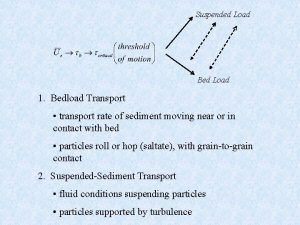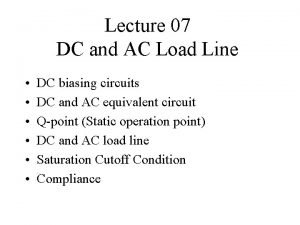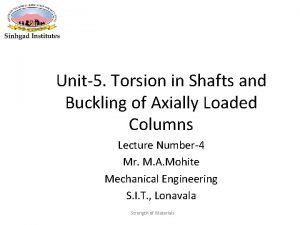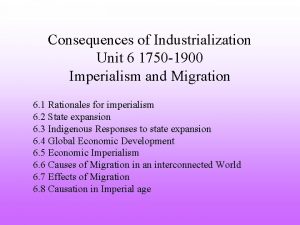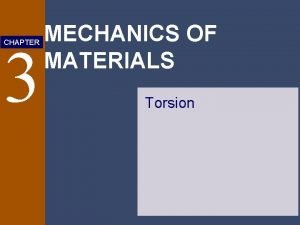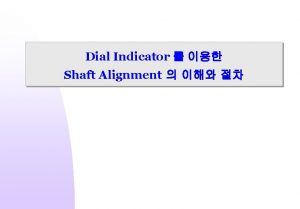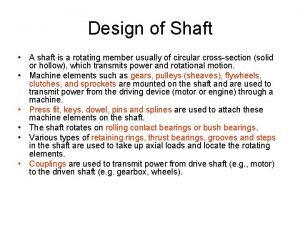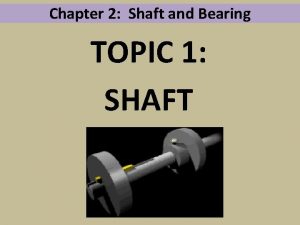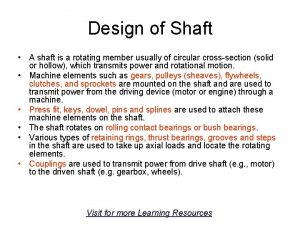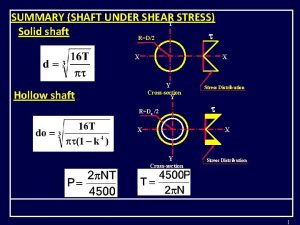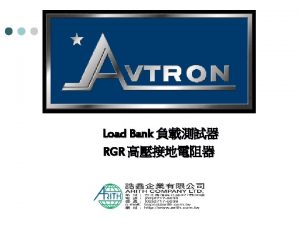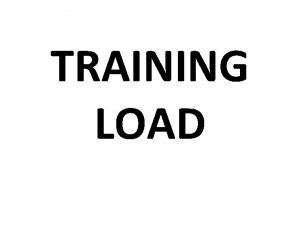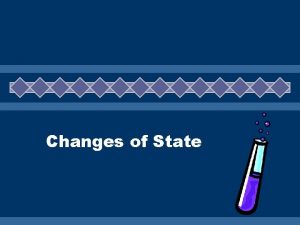Effects of Changes in Shaft Load Shaft load



















- Slides: 19

Effects of Changes in Shaft Load Shaft load is doubled – Iacosθi and Efsinδ must double

Effects of Changes in Shaft Load Since Field Excitation is constant, Ef traces a circular arc, δ increases θi decreases, increasing the power factor – continues until δ=90 -- pullout

Effects of Changes in Field Excitation Voltage on Synchronous-Motor Performance Apply step changes to Ef

Effects of Changes in Field Excitation Voltage on Synchronous-Motor Performance Efsinδ must be constant Apply step changes to Ef

Effects of Changes in Field Excitation Voltage on Synchronous-Motor Performance • Increasing the strength of the magnets should cause a closer pole alignment and a smaller power angle. • Assuming a constant shaft load, – apply a step increase to Ef – Efsinδ increases, the rotor accelerates – angle δ decreases until Efsinδ has the same value as before (synchronous speed)

Effects of Changes in Field Excitation Voltage on Synchronous-Motor Performance Iacosθ constant Efsinδ constant Apply step changes to Ef

Effects of Changes in Field Excitation Voltage on Synchronous-Motor Performance • For constant shaft load, – P is proportional to Efsinδ – Ef 1 sinθ 1 = Ef 2 sinθ 2 = Ef 3 sinθ 3 = Efsinθ – Locus of the tip of the Ef phasor is parallel to the VT phasor – P is proportional to Iacosθ – Ia 1 cosθ 1 = Ia 2 cosθ 2 = Ia 3 cosθ 3 = Iacosθ – Locus of tip of the Ia phasor is perpendicular to the VT phasor

Effects of Changes in Field Excitation Voltage on Synchronous-Motor Performance Iacosθ constant Efsinδ constant Apply step changes to Ef

Effects of Changes in Field Excitation Voltage on Synchronous-Motor Performance • IMPORTANT!!!! – Increasing the excitation from Ef 1 to Ef 3 caused the angle if the current phasor (and hence the power factor) to go from lagging to leading! – Normal excitation when power factor = 1 – Excitation greater than normal is known as overexcitation – Excitation less than normal is known as underexcitation

Effects of Changes in Field Excitation Voltage on Synchronous-Motor Performance Iacosθ constant Power factor changes from lagging to leading Efsinδ constant Apply step changes to Ef

V Curves • Plot armature current as a function of field current or armature current as a function of excitation voltage.

V-Curves

Stability Limit is where angle δ = -90° -- the rotor is still synchronized

V-Curves continued • Constant-Load V-Curves can be plotted from laboratory data, phasor diagrams, or from the following expression

Example 8. 2 • Referring to the V-curve for 100% load, determine – a) the minimum value of excitation that will maintain synchronism 98 V 100% rated load

Example 8. 2 continued • b) using Eq. (8 – 16)

Example 8. 2 continued • Repeat (a) using Eq. (8 -21) Make the quantity under the radical = 0 for minimum excitation

Example 8. 2 continued

Example 8. 2 continued • d) the power angle if the field excitation voltage is increased to 175% of the stability limit determined in (c).
 Elizabeth mulroney
Elizabeth mulroney Physical and chemical change
Physical and chemical change Red dot
Red dot Suspended load definition
Suspended load definition Ac load line
Ac load line Bearing
Bearing Poller screw ao
Poller screw ao Buckling of shaft
Buckling of shaft Polished shaft in the quiver of the almighty
Polished shaft in the quiver of the almighty Open-shaft diamond mining at kimberley south africa in 1872
Open-shaft diamond mining at kimberley south africa in 1872 Assembly drawing example
Assembly drawing example Mechanics materials
Mechanics materials Rim and face alignment
Rim and face alignment 1l2 moyno pump
1l2 moyno pump Three quarter floating rear axle
Three quarter floating rear axle Shaft mining
Shaft mining Procedure in replacing shaft
Procedure in replacing shaft Drilled shaft centralizers
Drilled shaft centralizers Tubular shaft of a long bone
Tubular shaft of a long bone Openshaft
Openshaft



